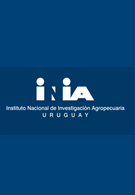ABSTRACT.- Among the most important sap-sucking insect pests (Hemiptera) of eucalypts are psyllids (Sternorrhyncha) and true bugs (Heteroptera). Damage inflicted to
trees by these insectsmay include significant leaf area loss, to weakening or tree death. High pest populations may affect a significant proportion of trees within commercial
stands, leading to large losses in forest productivity. Among the more than 400 species of Australian Hemiptera associated with eucalypts, eight psyllid species and
one species of true bugs (Thaumastocoris peregrinus) have spread around the world, becoming pests in eucalypt plantations. Management of these pests is essential to
maintain healthy plantations. Biological control with specific parasitoids has proven relatively successful for psyllids (Psyllaephagus spp.) and for T. peregrinus (Cleruchoides noackae). Predators such as spiders, ladybirds, lacewings, hoverfly larvae and other true bugs exert some additional control, yet alone are usually insufficient. The use of entomopathogenic fungi against these pests has only recently begun and needs further study. IPM of sap-sucking insects should consider all biotic and abiotic parameters, including inter and intra-guild interactions.
© The Author(s), under exclusive license to Springer Nature Switzerland AG 2025

